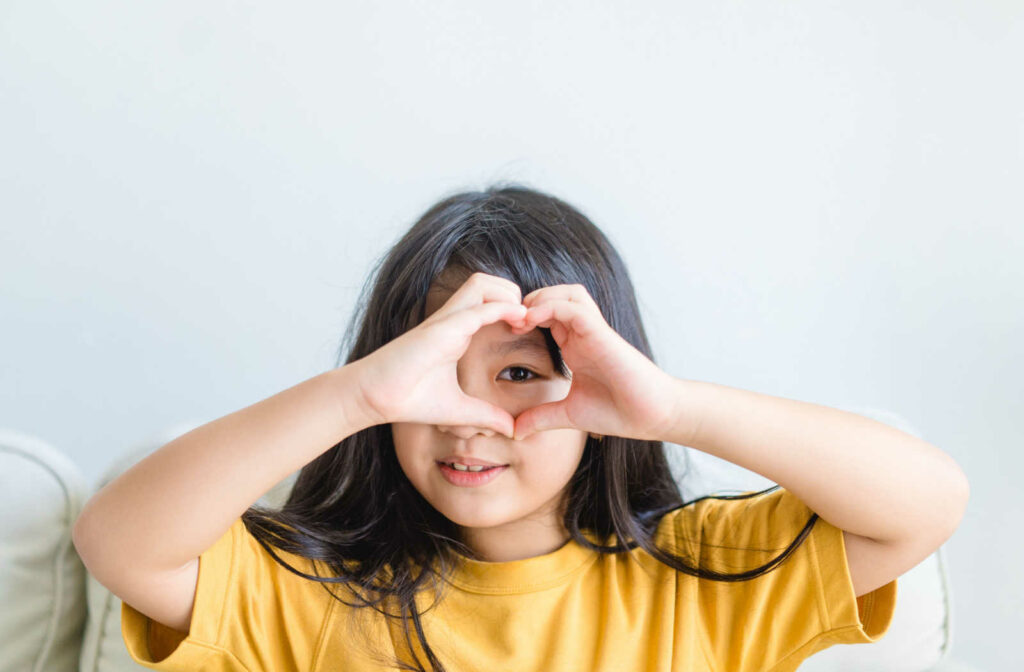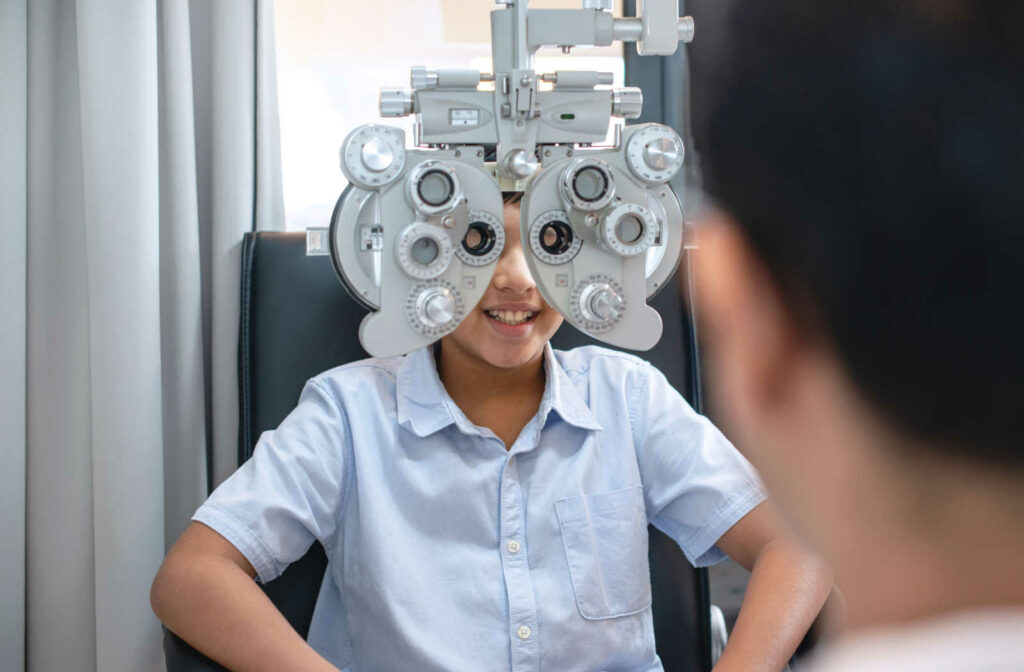Children go through incredible growth and development, which includes their eyes. Children should see their optometrist while they’re still growing to stay on top of their eye health. But the schedule for when children should get their first eye exam and how often after that is not set in stone.
This article explores the recommended children’s eye exam frequency suggested by the American Optometric Association and why your optometrist may recommend a different schedule.
Generally, most kids should see their eye doctor several times before they start school, then annually after that. Knowing how a child’s development affects their eye development can give you an advantage as a parent. With this information, you can ensure your child receives the eye care they need when they need it.
Importance of a Child’s Eye Exam
Eye exams are an important part of taking care of our eyes. Adult eye exams are crucial for adult and senior eye health because many diseases or conditions are linked with aging and develop with little to no symptoms.
Eye exams for children are still essential in ensuring their eyes are healthy and developing as expected. If an issue does crop up, early diagnosis and treatment help minimize the condition’s effect on your child’s life.
Children rely on their eyes to help them learn and grow. Ensuring they have the best vision possible is crucial for their education and social skills development.
How Often Should a Child Get an Eye Exam?
According to the American Optometric Association (AOA), children should have a comprehensive eye exam by the time they are 1, then another exam between ages 3 and 5. After your child starts grade school, they should have annual eye exams.
Children’s eyes grow rapidly until their early 20s, when their eyes fully develop. This rapid growth means eye issues can develop quickly and is a significant reason that annual eye exams are recommended.
Difference Between Child’s Eye Exams & Adult Eye Exams
At their cores, children’s and adult eye exams are meant to ensure proper eye health and correct any problems. The primary difference between the 2 is the conditions or eye problems the doctor is looking for.
In adults, especially older adults, the optometrist will likely screen for age-related conditions like glaucoma or cataracts. That said, depending on your family history, your eye doctor may check for less common issues with your child’s eyes if there’s a risk for them.
Many eye doctors focus on myopia during a child’s eye exam. Myopia is also known as nearsightedness and can pose significant eye health risks later in life. Myopia control options can help prevent it from progressing, so early myopia control is important for protecting their eyesight and vision.

A Child’s Eyes as They Mature
To understand what the eye doctor may look for in your child’s eyes, let’s look at the typical developmental milestones for young eyes.
Birth to Year 2
At birth, your baby will only be able to focus on objects 8 to 10 inches away from its face. If your child has the recommended exam in their first year, their eye doctor will check things like their ability to focus on and follow objects or sensitivity to changes in light.
Additionally, they will probably check your child’s color vision, the development of their depth perception, and whether they reach for objects.
Year 3 to Year 5
When your child turns 3, their vision should be around 20/20, and their depth perception should also be fully developed. If not, your eye doctor may recommend eyeglasses or other corrective options.
Year 6 to Year 17
By the time your child starts school, they should have had a few eye exams. Most optometrists agree that myopia control should begin as early as 6 to 8. But others suggest starting as early as 4 to increase the chances of successful management.
A child’s eyes may change as they develop and mature, so the AOA still recommends that children receive annual exams until age 17. From there, most people will be fine with an eye exam every 2 years unless their optometrist recommends differently.
The Benefit of Good Habits
Life rarely gets less busy. The best time to engrain good health habits is when our children are young. By diligently taking your child for their annual eye exams, you’re demonstrating the importance of caring for their eyes for the rest of their lives.
As these habits are built, and your child builds a relationship with their eye doctor, there is a good chance they will continue their good habits as an adult.
Book Your Child’s Next Exam
Regular eye exams are necessary for maintaining good eye health. But visiting the eye doctor shouldn’t be a stressful experience for you or your child. We work on providing a friendly, comfortable environment for all family members.
If it’s that time, please call us to book an appointment. Our professional staff at Eye Lab can help find a convenient time to bring your child in to see their optometrist.




